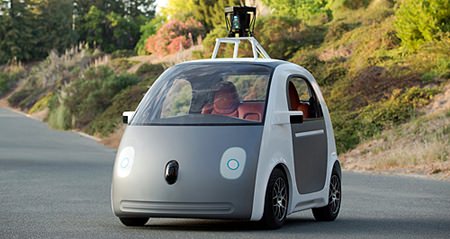Autonomous cars seem to be the buzz words at present. Have we the technology to build such cars that can drive by themselves, without hitting anything? Have we the faith in our technology that we can sit in the passenger seat and let HAL 9000 do the driving? (For those too young to know, HAL 9000 was the (Heuristically programmed ALgorithmic computer) and was a sentient computer (or artificial intelligence) that controlled the systems of the Discovery One spacecraft and interacts with the ship’s astronaut crew, in the movie 2001, A Space Odyssey.)
Many manufacturers are touting the fact that they have built remote control vehicles. Even the US Army has driverless cars that can travel for 100 km, negotiating all kinds of terrain, while firing the odd RPG in somebody’s direction.
 A Google bubble.
A Google bubble.
Now we have a non-automotive company joining the driverless fray, with Google showing this self-driving car at its Californian headquarters.
According to my sources, Google has started building a fleet of 100 self-driving electric cars to test its autonomous driving technology that it says could transform mobility. That is expressing the situation very mildly.
Google’s bubble cars in this early testing will be limited to 40 km/h and have plug-in controls to allow the driver to take over if the computer goes into ‘revolt’ mode, as did HAL 9000.
Apparently, Google has used modified cars from Toyota and Lexus to test its autonomous driving systems, covering 1.1 million kilometers on public roads over the past four years.
The new bubble cars were shown in California where Google co-founder Sergey Brin talked up the plans for the latest step in the company’s autonomous driving program which he hopes will be taken up by other car manufacturers.
The car is started by a go/stop button, as is the case with most cars these days. Once a destination is selected, it drives off under automatic control, using Google’s road maps, software and sensors such as lasers and radar to make its way through the traffic. The system is an extension of Google’s global mapping technology.
The vehicle is expected to have a range of about 160 km – about the same as many current electric cars – and will be made by a manufacturer in Detroit.
Google’s bubble cars initially will be used to ferry Google employees around the company’s campus in California.




